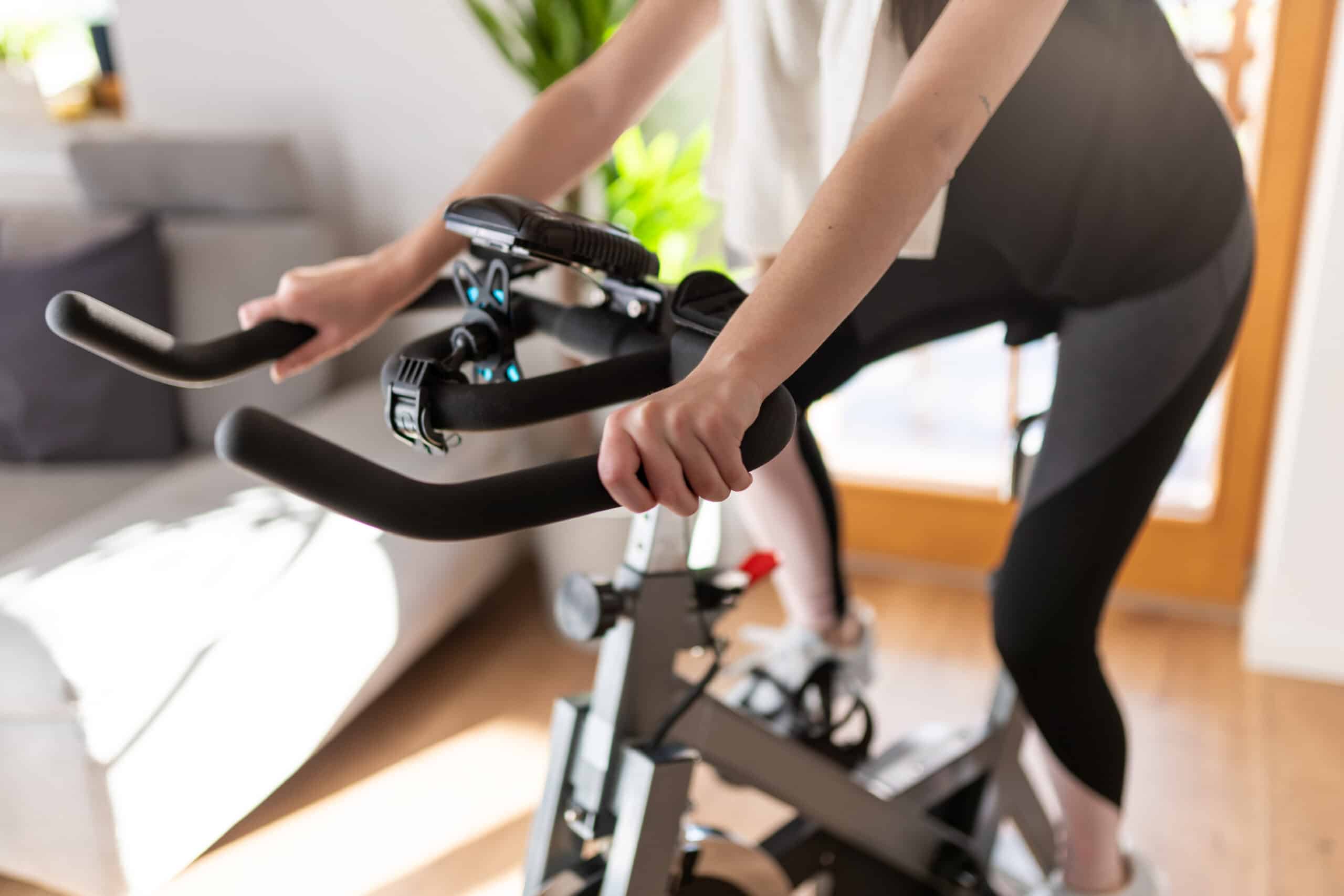
Tips To Avoid Back Pain While Riding Your Peloton Spin Bike
Whether you’re starting your morning off with Jess Sims, pushing yourself with Alex Toussaint, or getting in a low-impact ride with Emma Lovewell, spin cycling is a great form of exercise. I know many people who eat, breathe, and sleep Peloton every day, but with my busy schedule I goal myself to get on the bike at least 3-4 days a week. Even if you start small with one to two rides a week on your spin bike, you’ll soon enough be craving more and striving for personal bests with each ride. Here are some tips for avoiding back pain while on your Peloton, so that you can keep your momentum going and create a great fitness routine for yourself.
Fitting Your Bike
Before you even start your workout, take the time to properly fit your bike to your body size. This is very important, as many spin cycling injuries are caused from having a poor fitting bike. These elements are most important when fitting your spin cycle bike:
- Handlebar height
- Seat height
- Seat distance to handlebar
- Avoid hunching
Stretching
Once you have the bike fitted, you’ll want to make sure to stretch before getting on to ride. Just like before any sport, stretching is essential to warm up your body and muscles. Without stretching you could cause a number of injuries to your body, and possibly end up with a more extensive injury that would prevent you from riding for a long period of time. Some of the best stretches you can do before getting on your spin bike are:
- Neck Stretch
Lean your head to the right and hold once you start to feel the stretch. Do the same hold towards the left, front, and back. - Standing Chest Stretch
Stand up tall. Clasp your hands together behind your back, keeping your arms straight. You’ll then look toward the sky and pull your shoulders back. - Standing Side & Lower Back Stretch
Bring your hands together over your head, keeping your arms straight and palms to the sky. Bend at the waist towards the left, and hold. Switch to the right, and hold. Once you’ve come back up, you’ll do the stretch forwards. Reach out forwards, keeping your arms straight and palms outward. You’ll want to bend at the waist forming a 90 degree angle. Hold stretch, and then let your arms drop before standing back up slowly. - Standing Quad Stretch
Bend your leg back at the knee, trying to touch your foot to your butt. Hold your foot with the same side hand. Switch legs and repeat the stretch. - Standing Hamstring Stretch
Put one leg out in front, and point your foot to the sky. While keeping that front leg straight, bend forward through your hips. The back leg will have a slight bend during this stretch. Switch legs and repeat the stretch. - Seated Hip Stretch
While standing, bring one leg up and place your ankle on the opposite leg’s quad. Then sit back as if there was a chair behind you – only going as far as needed to feel the stretch. Switch legs and repeat the stretch. - Standing Lunge
Place one foot in front, and bend down into a lunge. Hold that position for the stretch. Make sure your knee doesn’t extend past your toes, and keep your hips square. Switch legs and repeat the stretch. - Standing Shoulder Stretch
Bring one arm across your chest, keeping it straight while doing so. Bring your other hand up and place it on the extended arm,right above the elbow. Pull the extended arm towards your body to feel the stretch. Switch arms and repeat the stretch.
Best Rides for Avoiding Back Pain
Not all rides are created equal, and not all instructors are the same. Choosing the best instructor for you is a personal preference, but when it comes to choosing a ride there are a few factors to take into consideration — especially if you already have back pain, or are prone to back pain or injuries.
- Type of Ride
Low Impact rides are easier on the joints compared to other rides like Climbs or Power Zones. They tend to be smoother, and are accessible for all levels of riders. You can also take a scenic ride that allows for you to stop whenever you feel the need to. And choosing a flatter scenic ride allows you to avoid any tough hill or mountain climbs. - Length of Your Ride
You don’t need to struggle through a 60 minute ride just because you want to get 60 minutes of cycling in. There are plenty of classes that are 15, 20, or 30 minutes long that you can combine together to create that 60 minute workout. By choosing those smaller length rides, you give yourself a quick break in between. By getting in an extra stretch or two, readjusting your seat, or grabbing some extra water, your back and your body will thank you. - Get Out of the Saddle or Stay Seated?
Do what you can handle, while keeping your resistance and posture in mind. Standing up does allow you to readjust and get your body back in alignment, but longer lengths of time out of the saddle can cause you to overexert yourself. Many people start to readjust their resistance during this time — it starts to get harder, and they want to keep up with the instructor. Too much resistance while standing might make you feel as if you’re struggling, so the natural inclination is to turn the resistance down. But if you have too little resistance, you are more prone to injuring your back because the petals can’t support your weight. With too little resistance you naturally start to lean too far forwards, causing hunching. Hunching then leads to straining your back, and thus causing pain. - Listen to Your Body
While all of the rides offered by instructors and classes are safe, make sure you listen to your body. Exercising can leave your muscles sore, but aches and pains are your body’s way of telling you something’s wrong. If you still have pain a few days after resting, it’s time to consult a doctor.
Your Cycling Form & Posture
Fitting your bike correctly will definitely help avoid any pain that an improper fit might have caused, but the fitting by itself isn’t the only way to avoid any pain. You need to make sure you keep correct posture and form while on your ride. There are a number of instructors that will remind you of your posture and form during a ride, but here are some factors to keep in mind while on any ride you take:
- Try to keep your back straight
- Avoid hunching
- Keep your chest wide and open
- Light grip on the handlebars
- Drop your shoulders
- You want your knees straight ahead over your toes
- Complete full cycles of pushing & pull with your legs
There’s a reason why Peloton, and spin cycling in general, has become such a popular form of exercise. You can get in a great structured workout, while having a competitive and motivational side to it. But just remember, introducing a new fitness routine or increasing your fitness routine can come with negative effects if not done properly. When getting on your spin bike for a ride, make sure you focus on what your body is telling you. Don’t push yourself too far, because too far can lead to injury – with back pain being the number one cause of improper cycling. If you find yourself with back pain, please reach out to schedule a consultation. Through the right treatment plan, we can get you back on your bike in no time!
Topics covered
About the Author
Featured Resources
Insights to Achieve a Pain-Free Life



